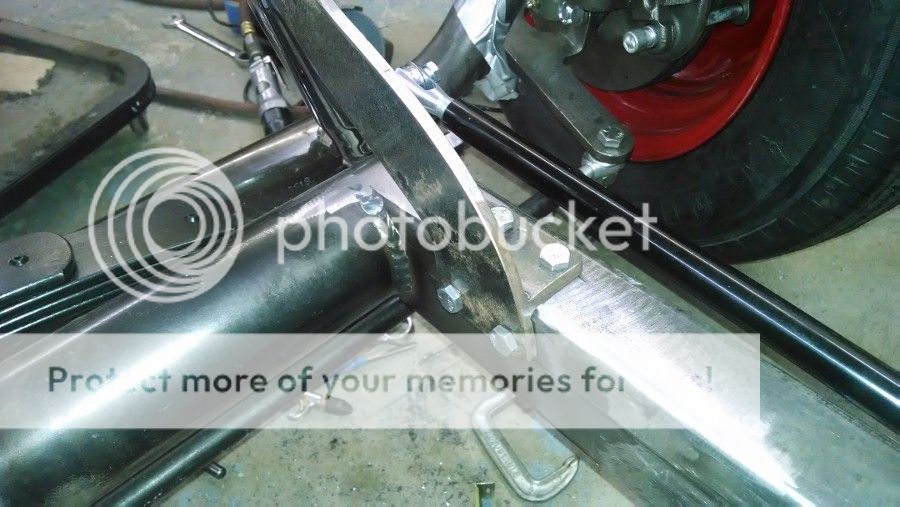TriodeLuvr
Member
Triodluvr would you happen to have a paper template of your front shock mount ?? Also what shocks did you use ? I really like the look. Thank You....
Sorry, I only have the CAD/CAM files used for milling. It might be possible to do a screen shot and scale it for hardcopy printout, but I haven't tried that before. You should be aware that mounting shocks this way isn't as easy as it probably looks. The exact position of the upper shock bolt is critical to achieving the correct ride height for the shocks. I measured the position of the axle relative to the frame carefully before drafting the design. After the brackets were cut, I bolted each one up semi-snug using only the center stud, rotated them fore-aft for the correct ride height, then drilled each one through only one of the four mounting holes into the frame. That set the alignment so I could drill and tap the remaining holes. Then I went back and countersunk the holes in the bracket for socket head flat screws (1/4 x 20 x 3/4). Drilling the frame was a bear, and if I had it to do again, I would locate the centers of the mounting bolts on a slightly smaller diameter. As it was, I didn't quite clear the edges of the rectangular frame stock where the holes through the cap break through inside. Also, I decided later that 5/16" screws might be preferable for additional strength. In my design, the larger countersunk heads would extend past the edge of the bracket. If the bolt pattern was moved onto a circle even just 1/8" smaller, both problems would be solved. Anyway, if you're still interested after reading all this, I'll take a look over the weekend to see if it's possible to print from my files. If so, it shouldn't be too difficult to modify the bolt pattern at the same time.
The shocks are Speedway 582SM300 with a 9" ride height. Speedway says these have the same internal construction as their part no. 582SM300C, which is smaller and less expensive. However, they were out of those when I ordered, and I didn't want to wait. Either should work fine.
Jack








